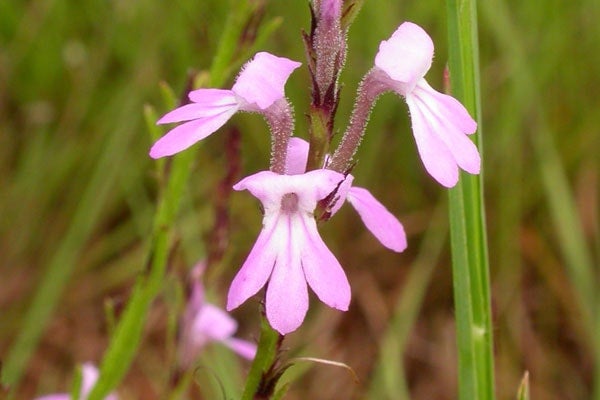
U of T scientists closing in on a way to eradicate crop-choking parasitic weed
Published: August 27, 2014
How do you stop a killer plant that destroys thousands of acres of crops each year? If you are cell and systems biologist Peter McCourt, you try to trick the ruthless weed into committing botanical suicide.
Vast fields of corn, cereal, rice and sugarcane are planted throughout Africa, Asia and Australia every year, only to be laid to waste by the parasitic plant Striga, also known as witchweed. It is considered by the United Nations to be the biggest impediment to alleviating poverty in Africa.
Fortunately, McCourt and his colleagues in the University of Toronto’s Department of Cell & Systems Biology and the Centre for the Analysis of Genome Evolution and Function, are closing in on a way to eradicate Striga that uses chemical compounds to fool the plants into germinating without their host crop.
“These are called ‘germination suicide compounds’ because without a nutrition source, they die,” said McCourt. “Once they die, food crops can be safely planted.”
Parasitic plants are attracted to hormones known as strigolactones (SLs) that are released by the roots of host plants. The SL compounds act as a germination signal for the seeds of a parasitic plant. By sensing SL in soil, the parasite knows a host is nearby. It then enters its roots and feeds off its nutrients until the host dies.
McCourt’s efforts are focused on finding inexpensive synthetically-produced compounds that mimic the SL hormones so desired by the Striga plant.
The researchers are using an approach common in the pharmaceutical industry, working their way through 10,000 compounds using a lab-friendly, yeast-based system to find germination suicide compounds. They have already found more than 40 compounds that proved worthy of investigating further, three of which went on to successfully stimulate germination of the seeds of Arabidopsis thaliana, a common model plant for experimental gene study. These three finalists also successfully stimulated Striga seeds to germinate.
“The results suggest screening strategies involving yeast and Arabidopsis models may accelerate the development of a treatment that is both effective and affordable by those who need it most,” said McCourt. "Spraying soil infested with Striga seeds to germinate them should theoretically rid the soil of the predator plant, allowing food crops to be planted and grown until they are ready to be harvested.”
The researchers announced the findings in a study titled “Detection of Parasitic Plant Suicide Germination Compounds Using a High-Throughput Arabidopsis HTL/KAI2 Strigolactone Perception System” published in the August issue of the journal Chemistry & Biology.



